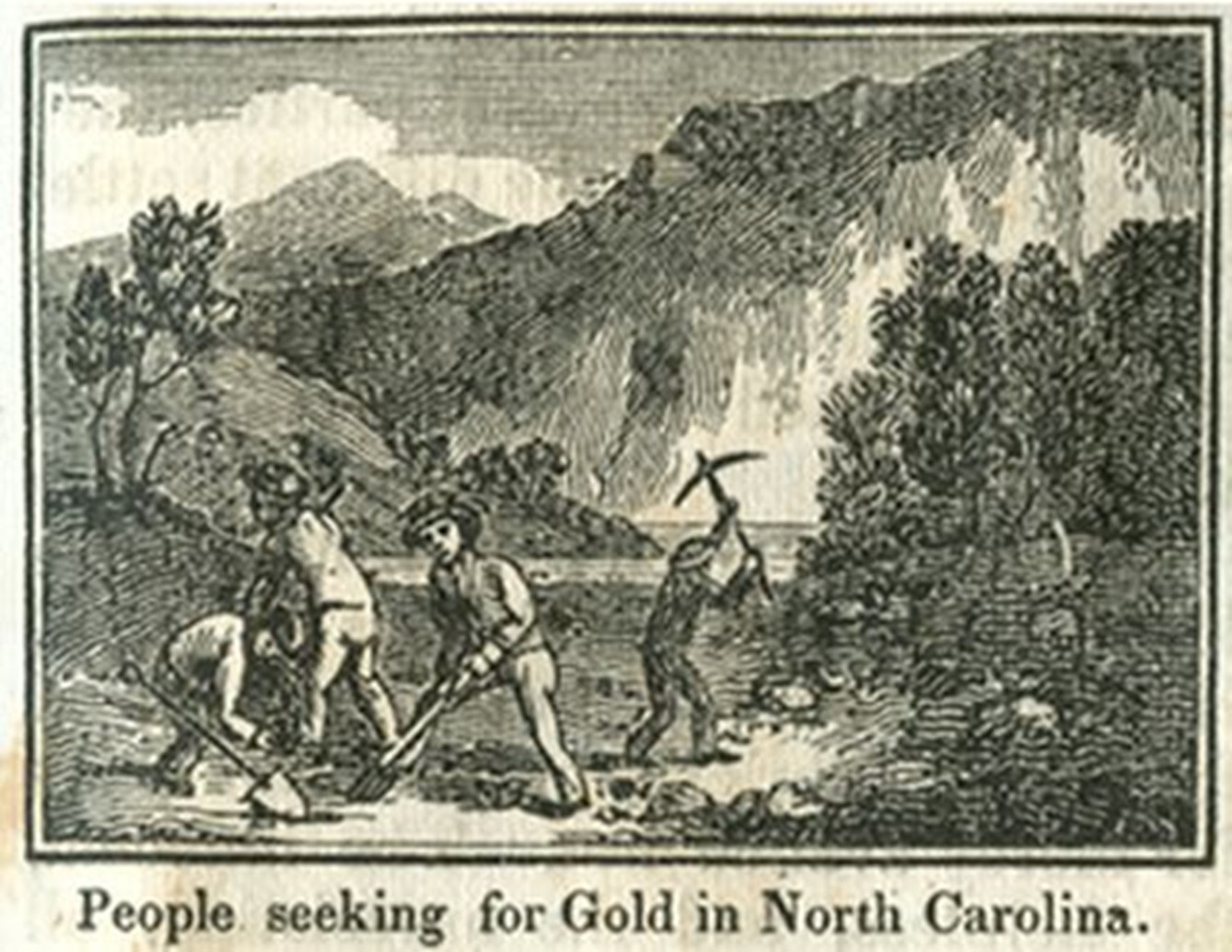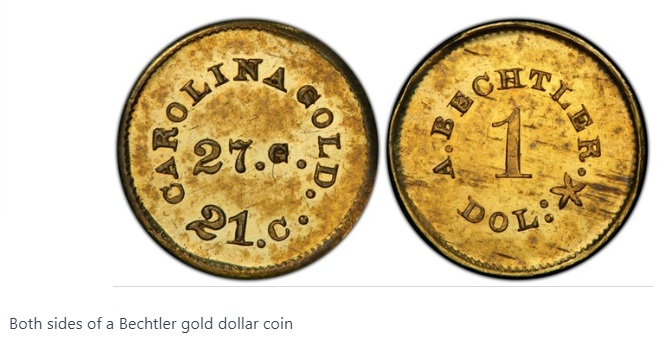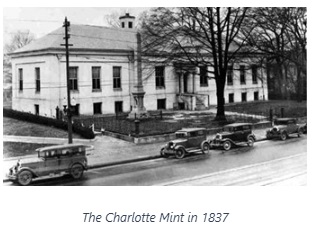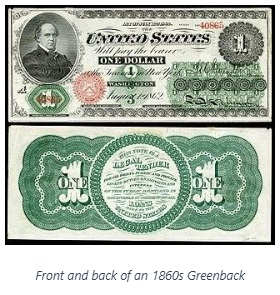The first gold rush in North America began in North Carolina in 1799 after a 12-year-old boy named Conrad Reed found a 17-pound gold nugget. The news spread, drawing the attention of tens of thousands of prospectors to begin mining operations throughout the state.
This gold rush made North Carolina a central hub for gold mining and private coining. Gold mining became North Carolina’s second-largest market, behind agriculture.

When people mined gold in the U.S., they could turn that gold into standardized coins by taking it to a private mint or the U.S. Mint and would receive completed coins in return.
Private mints existed in America, such as John Higley’s private mint in Connecticut which minted copper coins as early as 1737; John Chalmers’ Maryland-based mint that started producing silver and gold coinage in 1783; and, Templeton Reid’s Georgia private mint beginning in 1830.
Until 1835, the only federal government minting location was the U.S. Mint in Philadelphia, which was too far away and costly for most people living in the Carolinas. Certainly, that would be a dangerous journey to be carrying large quantities of gold.
Since 1792, the U.S. Mint had provided free coining of gold, silver, and copper when people turned in their monetary metals. However, since it was free of charge, the process was slow as many more people turned their metals in.
In contrast, private mints charged a small fee but could coin much quicker than the Philadelphia Mint.
The private options for standardizing the content, purity, and weight of a gold coin were not guaranteed by the government as “legal tender,” but banks and everyday people readily accepted them.
These private mints were praised for their highest quality standards well trusted by the market and competed directly with government mints. Privately minted coins were quite common.
Although the Coinage Act of 1792 pecified what the content, weight, purity, and denominations of U.S. coinage would be, the gold and silver coins produced were out of sync with world standards at the time in the sense that, in the U.S., silver was slightly overvalued versus gold.
 Foreign coins (e.g. Spanish silver dollar known as “pieces of eight”), privately minted coins, and U.S. Mint coins all circulated within the United States. (That is until Congress intervened by passing The Coinage Act of 1857 to stop the circulation of foreign coins.)
Foreign coins (e.g. Spanish silver dollar known as “pieces of eight”), privately minted coins, and U.S. Mint coins all circulated within the United States. (That is until Congress intervened by passing The Coinage Act of 1857 to stop the circulation of foreign coins.)
From 1799 through 1830, North Carolinians either made the long trek to Philadelphia to have their coins minted or traded with local banks that then took the raw gold to the Philadelphia Mint.
Answering the market demand, Christopher Bechtler opened a private mint in Rutherford County, North Carolina, in 1830 and began privately minting gold coins in 1831 and 1832. Bechtler minted $1.00, $2.50, and $5.00 face value gold coins. The Bechtler dollar gold coin was the first gold dollar coin in the United States. The Bechtler family minted coins until the 1850s.

Each Bechtler gold coin had the face value, “A. Bechtler,” “Carolina Gold,” and the weight in grams. For about 5 years the Bechtler Mint was the sole provider of gold coins in the Carolinas.
The federal government finally saw the need to open other mint locations around the country. In 1835, the U.S. Mint opened the Charlotte Mint, Dahlonega Georgia Mint, and the New Orleans Mint.
 From 1835 to 1861 the federal government operated the Charlotte Mint and produced gold coins. During the Civil War, the Confederates converted the Charlotte Mint into a hospital and military office.
From 1835 to 1861 the federal government operated the Charlotte Mint and produced gold coins. During the Civil War, the Confederates converted the Charlotte Mint into a hospital and military office.
After the Civil War, the Charlotte Mint was converted to an Assay Office (1867-1913) before eventually being closed altogether on the notion that there was ostensibly no longer enough gold available to justify minting activities.
 At the same time minting abruptly ended in North Carolina, central planners created the first U.S. income tax in 1861 and fabricated the US-Union fiat currency known as greenbacks in 1862 (Confederates made fiat greybacks). Truly a monetary seigniorage scheme.
At the same time minting abruptly ended in North Carolina, central planners created the first U.S. income tax in 1861 and fabricated the US-Union fiat currency known as greenbacks in 1862 (Confederates made fiat greybacks). Truly a monetary seigniorage scheme.
They also created the IRS in 1862, established the federal tax levy court system, made private minting of coins or money illegal in 1864, expanded federal powers and territory through the National Banking Acts of 1863 and 1864 to create a false sense of demand, and created the Secret Service in 1865 to enforce those anti sound money laws and system.
Call me a skeptic.
This series of events that echoed throughout the American Civil War effectively ended North Carolina’s growth and leadership in gold mining and the private minting of sound money.
Today, you can still visit Reed Gold Mine in Midland, and the site of the Bechtler Mint in Rutherfordton. The Charlotte Mint building was relocated and reconstructed into the Mint Museum at Randolph in Charlotte in 1933 — which was the same year that the U.S. government made owning gold bullion illegal.
********




